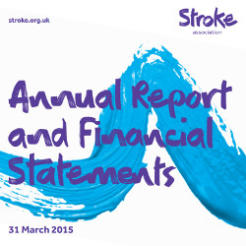The Stroke Association’s income grew by more than 10 per cent, from £33.5m to a record £37.5m in the last year, partly down to an increase of almost £3m in legacy donations.
However, the charity narrowly missed out on meeting its target for its 2010 to 2015 strategy, which was £40m. The charity’s accounts said this was due to a slowdown in the economy in the early years of the period and the policy of public sector austerity, as well as a reorganisations of commissioning arrangements in the NHS.
The charity’s increase in income, according to its recently filed annual report and accounts for the year ending March 2015, came as a result of fundraised income, legacies and money received for contracted services. Its total voluntary income was up by £3.4m to £24m. As well as an increase in legacy donations, this came from donations and appeals.
The Stroke Association’s total resources expended also went up by £1.6m to £33.6m, with most going towards its community services.
Redundancies
The full-time equivalent number of employees rose by 14 to 649, with employees and staff costs increasing by £911,000. Despite this, a total of £136,000 was spent on redundancy costs, up from £107,000 in the previous year.
A spokeswoman from the Stroke Association confirmed to Civil Society News that during the past financial year, the charity made 25 redundancies.
Roy Quiddington, director of finance and resources at the Stroke Association, said: “In recent years, there have been a number of significant changes to the environment in which we operate. Health and social care services have been reorganised, and local funders of Stroke Association services, including NHS Trusts, Clinical Commissioning Groups and borough councils, have had to make large financial savings.
"As a result, over the past financial year, contracts for Stroke Association services in areas including Bradford and Cornwall have not been renewed. This has sadly led to redundancies among Stroke Association service staff members.
“As the Stroke Association is entering a new strategy period this year, the charity also recently conducted a role and structure review to see how we make best use of our resources. Regretfully, a number of staff members were therefore also made redundant.
“Our focus is on investing our resources in existing services and developing new ways to support stroke survivors across the UK. The Stroke Association will continue to use its funds in the most effective way possible to help change the world for people affected by this devastating condition.”
Two of the highest earning employees earned between £70,000 and £80,000, the same as last year, while the number of people earning over £60,000 increased from five to six.
The last financial year saw a launch of a new mobile friendly website for the charity, as well as the development of a new database for the Stoke Helpline and Information Service.
The number of stroke survivors and their families helped by the charity fell by 5,000 to 85,000, however this could be partly explained by some accessing information and support through its website instead of calling the helpline.
It also entered into a £2m partnership with the Royal Mail to fund around 10,000 welfare grants to stroke survivors.
Outlining its strategy ambitions for 2015 to 2018, the charity said it would focus on the development of new children and stroke guidelines, treatments, practical support to children and more stroke recovery services, as well as more research on treatment.
Jon Barrick, the charity’s chief executive, announced his resignation in July following 12 years in the role.









